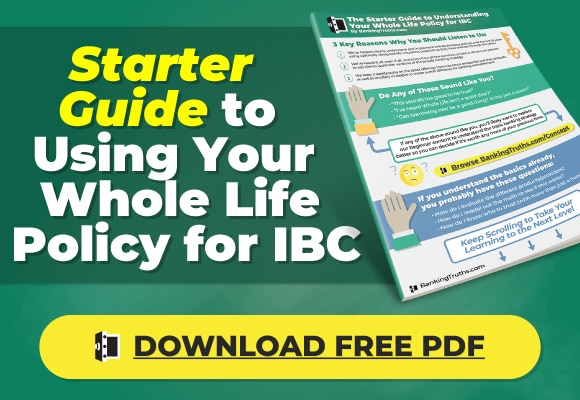Shifting Bank Accounts Into A Life Insurance Policy Designed For Privatized Banking
Shifting Bank Accounts Into A Life Insurance Policy Designed For Privatized Banking
When it comes to redeploying existing assets into a PLI program, I like to use this very technical demonstration of how the mechanics can work.
You’re going to see here in just a moment – okay, it’s not that technical, it’s a pair of pants but I think this works best for you to understand the point.
What I really want you to take away from this is when you move money from existing assets into a PLI program, it really is just like moving money from one pocket to another pocket.
Here’s what I mean by that – let’s just say for a moment that somebody has one hundred thousand dollars sitting in a money market and I know everybody’s situation is different but just for the sake of simplicity and using round numbers let’s use one hundred grand.
And let’s also say that this money market is a great one and it pays a full 1 percent annual interest on whatever’s in the money market. If that were to happen, what you’d have here is you’d have an inflow of a thousand dollars of interest which would be great for something that’s guaranteed FDIC insured and all that.
However, you don’t get to keep this full 1 percent because this type of account is in a fully taxable environment at your ordinary rate each and every year. We’re going to have to pay some tax on that.
So if we just use a round number let’s say after paying state and federal tax – let’s just use three hundred and fifty dollars here. Now after we pay our tax of three hundred fifty. What are we left with? We’re left with six hundred and fifty dollars.
However, if we combine this with another strategy that a lot of my clients have when they come to me and also include some term insurance, and let’s even just say for a second that this term insurance only costs them seven hundred dollars a year.
You can see now also and by doing this we’re at negative 50. Our positive 1000 actually went to negative 50 so we actually have a negative return on these combined strategies.
All that said, one of the things that you can do is simply by moving this money from one pocket to another pocket, and again you can’t do it all at once without losing some key tax advantages. But let’s just say we did this over the course of five years. Move this hundred thousand dollars over and let’s just say we did it at a clip of twenty thousand a year. Right? Times five years.
At the end of this trial at the end of the five year period or sometime close to it, our full one hundred thousand was there. Maybe it actually was more than that, it picked up some friends along the way. Maybe it was a little less.
What I can tell you that you can expect from this is, it might be a little more or a little less after about five years but we find on average there’s a break-even around the five year period.
Everybody situation is going to be different. We can’t guarantee it. But again when we go and look at numbers, we’ll find that we’re going to hit this break-even period somewhere between year three and year seven.
Let’s just say for a moment the full hundred thousand there. Well, let’s see what other benefits we picked up simply for moving money from one pocket to another pocket.
Well, one is we now have the opportunity to earn a better rate of return each and every year. If we choose the type of policy that gives you a guaranteed floor of zero, well, some years you might earn zero. Some years you may earn double-digit rates of return – which can be very nice.
If it was over in this other pocket on that growth we’d also have to pay some tax. We also may not have to pay for term insurance or as much term insurance, so simply by moving money from one pocket to another pocket. What we get to do is we get to cut out some of these eroding factors the model.
So when you look at the strategy as a whole, if you can accept for the first five years (three to seven years), it’s going to be about a break-even strategy. But thereafter you have a much better opportunity to pick up some growth.
You get to cut out the tax man on that growth and you also get to cut out some of those term insurance costs. A lot of my clients really enjoy this.
Click here to schedule a call with us to take a deeper dive into this banking concept to help you understand how this could look for your situation going forward.

John “Hutch” Hutchinson, ChFC®, CLU®, AEP®, EA
Founder of BankingTruths.com

